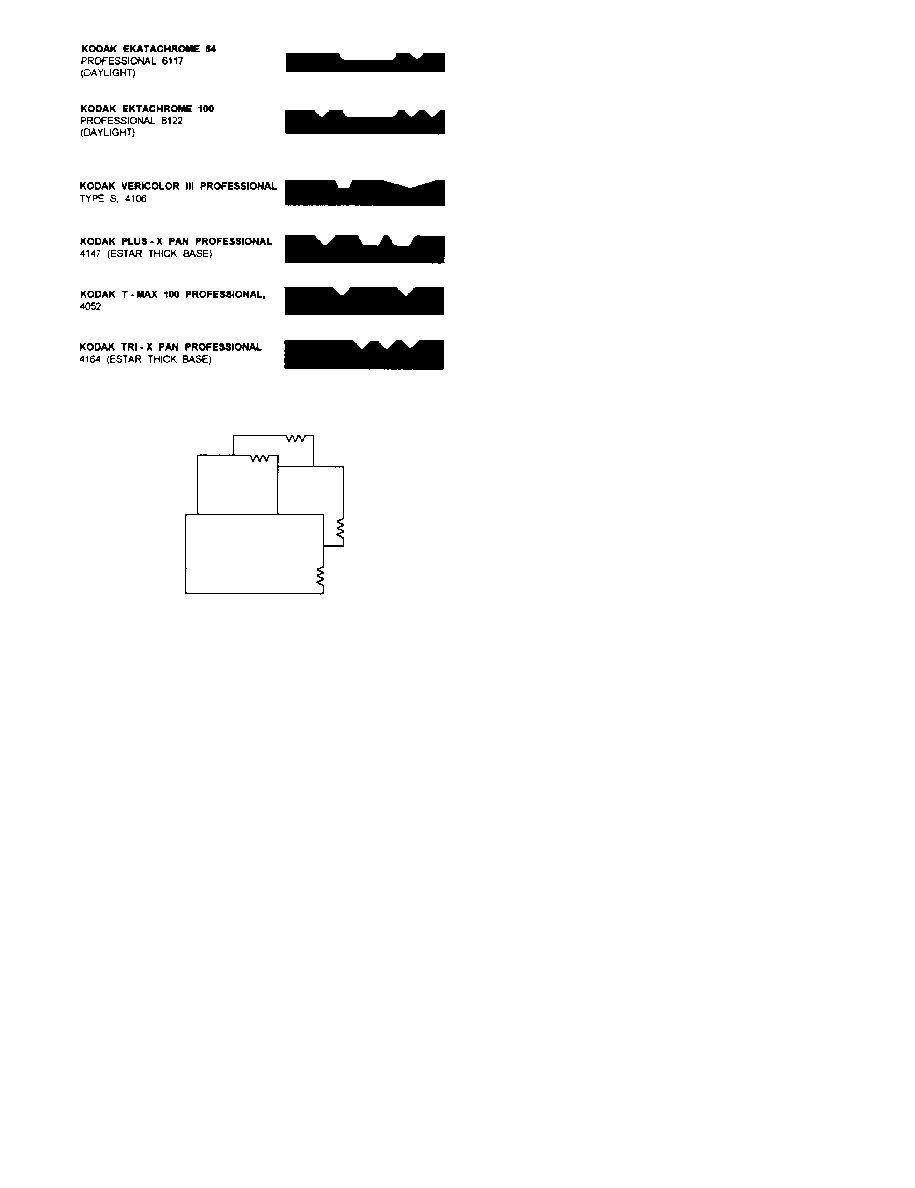
DOFMaster
for Windows
On-line
Depth of Field
Calculator
DOFMaster for Mobile Devices
On-line
Depth of Field
Table
Hyperfocal
Distance Chart
Articles
FAQ
Recommended
Books
Support
Contact
Links
Home
for Windows
On-line
Depth of Field
Calculator
DOFMaster for Mobile Devices
On-line
Depth of Field
Table
Hyperfocal
Distance Chart
Articles
FAQ
Recommended
Books
Support
Contact
Links
Home
As an Amazon Associate I earn from qualifying purchases.
![]()
inches), 4.5x6 cm, or 6x7 cm. No. 220 roll film is used
for making the same size negatives, but because most of
the paper backing is eliminated, the roll is longer than a
frames per roll. Also, 35mm films come in rolls 100 feet
long that can be bulk-loaded into reusable cassettes.
backing and must be loaded into and removed from film
Kodak Readyload Packets that provide two sheets of
film in a paper packet. These packets can be loaded into
a Kodak Readyload Packet film holder or a Polaroid film
holder, Model 545. The Kodak Readyload Packets are
available only in 4x5 format.
film type and the emulsion side of the film. Every film
type has a different notch code (fig. 2-5). The emulsion
side of the film is toward you when the notches are along
the top edge in the upper right-hand corner, or on the
bottom right edge in the lower right-hand corner of the
film (fig. 2-6).
safelight. The emulsion side is lighter in color than the
base side. If the emulsion side of the film must be
identified in total darkness, wet your lips and place the
edge of the film between them. The emulsion side of the
film will stick to one of your moistened lips.
commonly used image-recording medium. All floppy
disks are the same. There are no black-and-white and
color floppy disks. The camera and the printer being
used determine whether the image is black and white or
color. Images are stored as magnetic impulses on
compact 2-inch still-video floppy disks.
camera). When the frame mode is selected, each picture
is recorded on two tracks. Twenty-five images can be
recorded on a floppy disk in the frame mode. When the
field mode is selected, each picture is recorded on one
track In the field mode, 50 images can be stored on each
disk. The result of using one track per photograph is the
images are less detailed than those recorded on two
tracks (frame mode). The quality of the frame-recorded
image is superior to that of the field-recorded
photograph. A combination of field and frame images
can be stored on the same disk; however, for higher
quality use the frame mode.
recorded right after the image is recorded. The sound
Basic Photography Course

As an Amazon Associate I earn from qualifying purchases.
WWW.DOFMASTER.COM
© 2006 Don Fleming. All rights reserved.
© 2006 Don Fleming. All rights reserved.